Visit the Giza Pyramids and Grand Egyptian Museum outside of Cairo to see the world’s largest collection of Egyptian antiquities on a private tour with entry, hotel transfers, and guide.
$85.00
Add to cart
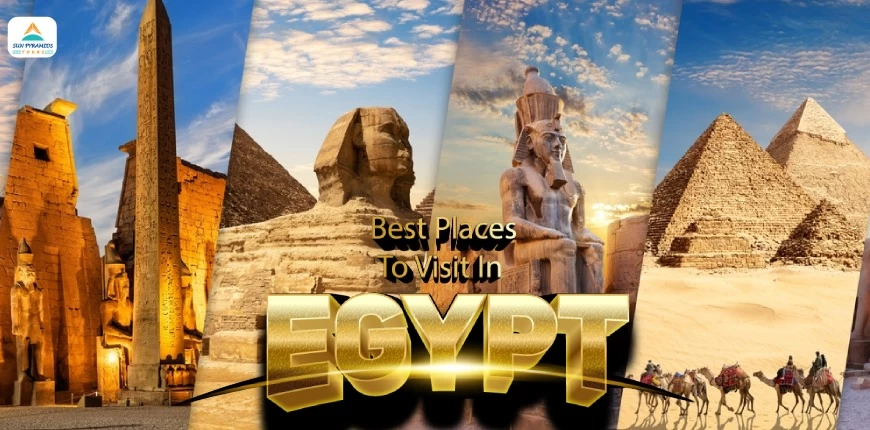
Tags: best places to visit in Egypt,Best Tourist Attractions in Egypt,Egypt Tourist Attractions
Whether it’s exploring the azure depths of the Red Sea, gazing at the stars in the expansive desert, drifting along the Nile River, or being captivated by the remnants of an ancient civilization, Egypt presents an array of travel adventures that leave holidaymakers spoilt for choice. The dilemma for many is pinpointing the starting point of their expedition. But don’t worry. Sun Pyramids Tours is here to assist! Sun Pyramids Tours, 1970, the most innovative travel agency in Egypt, is inviting you to embark on a remarkable journey through the Best Tourist Attractions in Egypt. And the best places to visit in Egypt.

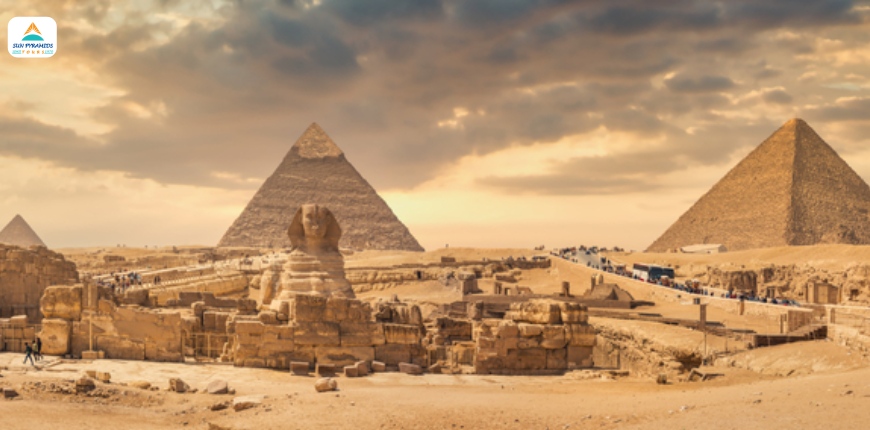
Egypt’s vibrant capital is a treasure trove of cultural, religious, architectural, and culinary heritage. Its marvels extend beyond the confines of its renowned museums. And, of course, one of the Best Tourist Attractions in Egypt. A simple stroll down the city streets can reveal centuries of history, and a casual conversation with a local can uncover hidden gems.
The Giza Pyramids stand as among Egypt's most awe-inspiring attractions, situated on the Giza plateau along the western bank of the Nile. Comprising the grand trio of Khufu, Khafre, and Menkaure, these monumental structures were erected approximately 4,500 years ago to serve as the final resting places for their respective pharaohs. Khufu's Pyramid, in particular, holds renown as one of the Seven Wonders of the Ancient World, retaining its status as the tallest man-made structure until the 17th century. No excursion to Egypt is complete without a visit to these iconic landmarks, which represent a pinnacle in the evolution of ancient Egyptian tomb architecture.
Furthermore, the Dahshur pyramid complex merits exploration, housing both the Red Pyramid and the Bent Pyramid. A visit to this site, nestled near the Saqqara area, offers a glimpse into the rich tapestry of ancient Egyptian history, complemented by the awe-inspiring Step Pyramid of Saqqara.
The Sphinx, an iconic statue depicting a mythical creature with the body of a lion and the head of a human, stands as a testament to ancient Egyptian artistry and ingenuity. Carved from a single block of limestone, this enigmatic figure is thought to have been constructed during the reign of Pharaoh Khafre, circa 2558-2532 B.C., with the intention of resembling the ruler. Positioned on the Giza plateau along the western bank of the Nile in Giza, Cairo, the Sphinx remains a symbol of Egypt's rich cultural heritage and enduring legacy.
The Grand Egyptian Museum, often referred to as the Giza Museum, is a soon-to-be-completed archaeological museum located in Giza, Egypt, approximately 2 kilometers (1.2 miles) away from the iconic Giza pyramid complex. The museum is set to house over 100,000 artifacts from the ancient Egyptian era, including the entire Tutankhamun collection, with many items being exhibited for the first time. Spanning 81,000 m2 (872,000 sq ft), it is poised to become the world’s largest museum dedicated to archaeology. The museum is a key component of the new “Giza 2030” master plan for the Giza Plateau.
At the heart of the city lies Islamic Cairo, the city’s most character-filled district. Arm yourself with a camera and explore its lively lanes. Absorb the vistas from the Citadel and the ancient city gates - Bab Zuweila, Bab al-Futuh, and Bab an Nasr - and marvel at the intricate designs of the area’s magnificent mosques. The historic Mosque of Muhammad Ali, Ibn Tulun Mosque, and Al-Hakim Mosque are particularly noteworthy. Islamic Cairo also boasts the monument-rich Muizz Street and Khan El-Khalili bazaar - perfect places to pick up souvenirs (provided you’re ready to haggle).
A lesser-known area is Coptic Cairo, which houses the Coptic Museum, the Hanging Church, and the towers of the long-gone Babylon fortress - a significant site for Egypt’s small Christian community since the first century CE.
As night falls, Cairo comes alive with its vibrant nightlife - enjoy a drink in the historic downtown bars or catch live performances at trendy clubs and art spaces.

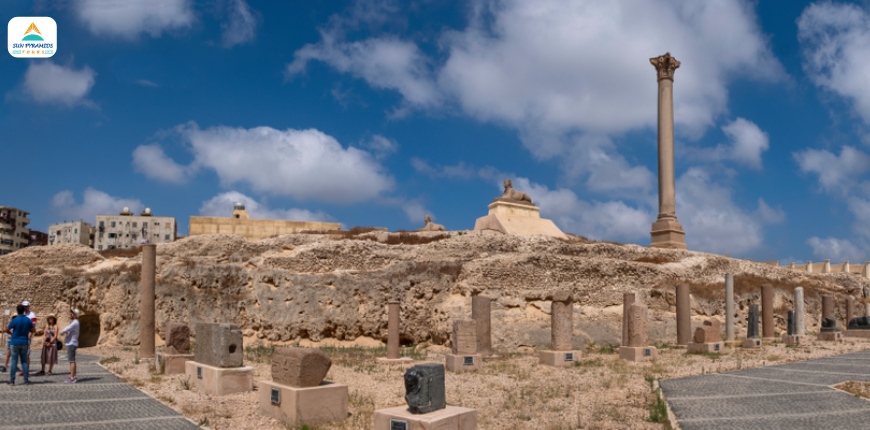
Alexandria, Egypt’s second-largest city, is a significant industrial and tourist center nestled along the Mediterranean coast. Today, Established by the legendary Alexander the Great and presided over by the iconic Queen Cleopatra, Alexandria’s origins and early years are marked by a line-up of illustrious personalities. It is undoubtedly one of the best places to visit in Egypt. Alexandria continues to charm with its blend of ancient grandeur and modern attractions, such as:
This modern library, inaugurated in 2002, is a tribute to the ancient Library of Alexandria. Its striking architecture, resembling a massive discus emerging from the sea, houses millions of books and manuscripts in various languages and disciplines. It also hosts several museums, galleries, planetariums, and cultural centers, symbolizing Alexandria’s rich artistic heritage and pursuit of knowledge.
It may be a modest alternative for what once existed in the location of the mighty Pharos Lighthouse, which was brought down by a violent earthquake in 1303–but this compact fort has been safeguarding Alexandria since 1480. Mamluke Sultan Qaitbey constructed Fort Qaitbey in a bid to strengthen this crucial Egyptian port from assault, and debris from the fallen lighthouse was utilized in its construction. Within, you can navigate the array of stone-walled chambers and ascend to the roof to gaze out over the Mediterranean.
Pompey's Pillar stands as one of the tallest monuments globally and represents the sole Roman artifact situated beyond the borders of its native land. Constructed from granite during the third century AD, this imposing structure was erected in honor of Emperor Diocletian. Positioned atop the hill of Sedra, it boasts dimensions of approximately 27 meters in length and 26.85 meters in height, serving as a remarkable testament to ancient Roman craftsmanship and imperial grandeur.
Montazah Palace is a royal palace built by Khedive Abbas II in 1892 as a summer residence for him and his family. The palace combines Turkish and Florentine styles, with elegant domes, arches, columns, and balconies. Montazah Palace is where you can enjoy some peace and tranquility away from the hustle and bustle of the city.

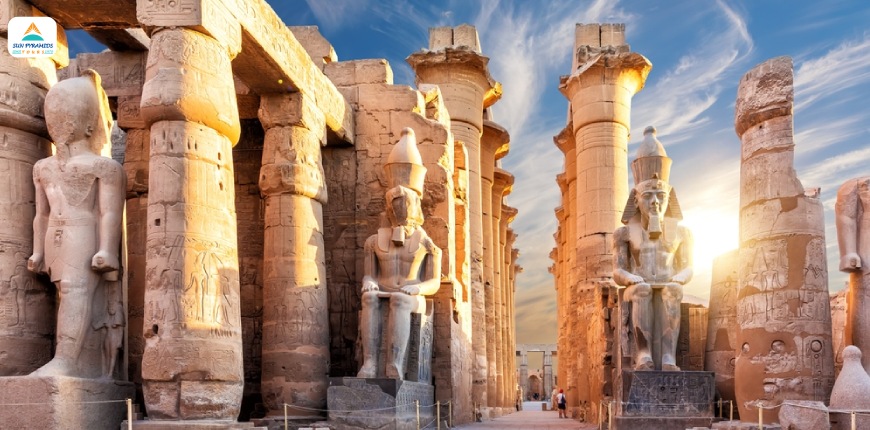
Luxor, the site of the splendid ancient city of Thebes, is reputed to house a third of the world’s antiquities within the columns of its grand temples. Often referred to as the world’s largest open-air museum, and number one Egypt Tourist Attraction, this Upper Egyptian capital recently celebrated the grand reopening of the 2.7km (1.7 mile) Avenue of the Sphinxes, an age-old route linking the Karnak Temple, the abode of the renowned Temple of Amun-Ra, and the remarkably preserved Luxor Temple. A sunrise journey in a hot air balloon offers a mesmerizing aerial perspective of this city steeped in ancient marvels. Once you descend, make your way to the Hatshepsut Temple and Medinet Habu - two colossal ancient structures that frequently grace travelers’ Instagram posts. Then, cross the river to the Valley of the Kings, the royal resting place of Tutankhamun, Seti I, and Ramses II.
Karnak Temple Complex is a vast complex of temples, chapels, pylons, obelisks, and statues that were built over a period of 1,500 years by various pharaohs and dedicated to the god Amun and his consort Mut. Karnak Temple Complex is the largest religious complex in the world, covering an area of 200 hectares. The complex’s highlights include the Great Hypostyle Hall, which has 134 colossal columns; the Sacred Lake, used for ritual purification; and the Avenue of Sphinxes, which connects Karnak with Luxor Temple. Karnak Temple Complex is a masterpiece of ancient Egyptian architecture and art that will awe and inspire you.
Valley of the Kings is a necropolis where the pharaohs and nobles of the New Kingdom were buried in rock-cut tombs that were decorated with scenes from Egyptian mythology and religion. Valley of the Kings contains more than 60 tombs, some open to the public. The most famous tomb is that of Tutankhamun, discovered in 1922 by Howard Carter, which had a wealth of treasures and artifacts. Valley of the Kings is where you can explore the secrets and mysteries of ancient Egyptian civilization and its beliefs about death and the afterlife.
The Temple of Queen Hatshepsut is a mortuary built by Queen Hatshepsut, one of the few female pharaohs in Egyptian history who ruled from 1479 to 1458 BC. The temple is at the foot of a cliff and consists of three terraces connected by ramps and colonnades. The temple is adorned with reliefs and statues that depict various aspects of Queen Hatshepsut’s life and achievements, such as her divine birth, her expedition to Punt (a land in Africa), and her offerings to the gods. The temple is a tribute to Queen Hatshepsut’s power and glory and her contribution to Egyptian culture and art.
In close proximity to the magnificent city of Luxor lies the splendid Dendera Temple, revered as the sacred abode of the goddess Hathor, embodiment of healing and love. Conversely, the Abydos Temple served as a focal point for the worship of Osiris, the sovereign of the underworld, believed to serve as a gateway to the realm of the dead. Both sites are adorned with exquisitely preserved decorations and artifacts, making them among the most picturesque and well-preserved treasures throughout Egypt.

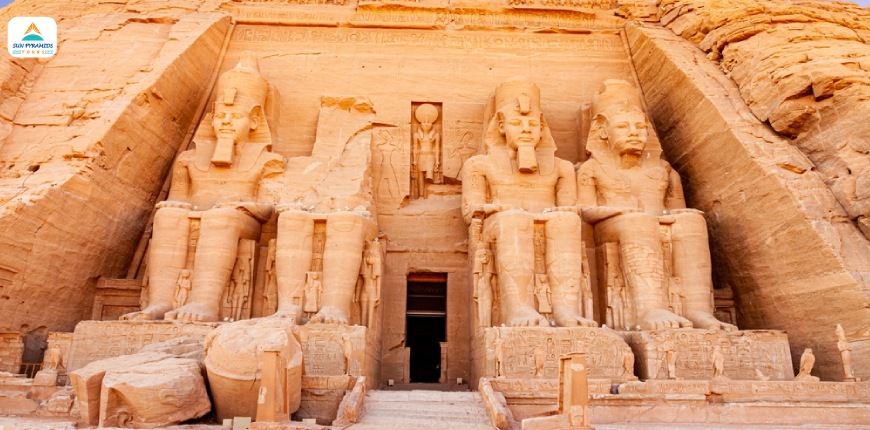
Aswan, with its palm trees and verdant patches dotting the arid riverbanks, is one of Egypt's Tourist Attractions, renowned for the unparalleled hospitality of its Nubian inhabitants. Navigate your way to any of the 20 river islands on a felucca, the traditional wooden sailboats that traverse the Nile. To delve deeper into Nubian culture, pay a visit to Gharb Soheil Island or wander through the vibrant streets of Aswan’s Nubian Village. Savor home-cooked vegetarian or chicken tagines at local eateries, or procure fragrant spices from Aswan’s lively spice market. Aswan is celebrated for its breathtaking sunsets, which can be enjoyed from any of the islands or while cruising the Nile on a felucca. Another prime location for sunset viewing is the restaurant at the famed Sofitel Legend Old Cataract, where renowned English author Agatha Christie wrote her celebrated mystery, Death on the Nile. Local tip: If you’re up for an early start at 3 am, a day trip across the desert to Abu Simbel is a dream come true for history enthusiasts; the entire temple complex was relocated when the valley was inundated by the Aswan High Dam in the 1960s. If you prefer a later start, explore Aswan’s Temple of Isis, which was relocated from its original site on Philae Island.
The Philae Temple stands as one of the final sanctuaries erected in Egypt, its construction spanning from 380 BC to 362 BC under the reign of King Ptolemy II. Subsequent monarchs of the Ptolemaic Era contributed to its expansion. Situated along the Nile River, it once occupied a revered position opposite the Aswan desert, serving as a sacred precinct dedicated to the veneration of Isis, the goddess of Motherhood and Healing. Within its hallowed precincts lie remnants of ancient temples erected in homage to the Pharaohs. This revered site has been instrumental in unraveling the mythological tapestry of ancient Egypt, notably contributing to the understanding of legends such as that of Osiris.
The Unfinished Obelisk traces its origins to the New Kingdom era during the reign of Queen Hatshepsut, a prominent figure within the Pharaohs' domain. Noteworthy for its colossal proportions and the fact that its construction remains incomplete, this monument stands as a testament to ancient Egyptian craftsmanship and engineering prowess.
The Aswan High Dam, situated on the Nile River in the southern region of the Republic of Egypt, was erected during the mid-1950s under the leadership of Gamal Abdel Nasser. This monumental structure serves the crucial function of regulating the flow of the Nile's waters, mitigating the impact of flooding. Additionally, it harnesses the river's energy to generate electricity, thus playing a pivotal role in meeting Egypt's power needs.
The Temple of Abu Simbel, nestled in southern Egypt on the western shores of Lake Nasser, approximately 290 kilometers southwest of Aswan, comprises two colossal rock temples, recognized as a UNESCO World Heritage Site under the umbrella of Nubian Antiquities. These temples pay homage to the illustrious reign of King Ramses II and his esteemed wife, Queen Nefertari. The grandeur of Ramses II's victories, notably the historic Battle of Kadesh, is immortalized within one of the temples, while the other is dedicated to Nefertari. Enthusiasts of ancient history flock to this majestic site to unravel the mysteries of Egypt's remarkable civilization. A highlight of the Abu Simbel experience is the Sun Festival, observed on February 22nd and October, commemorating Ramesses' ascension to the throne and his birth, respectively. Renowned as one of Egypt's premier attractions in 2024, Abu Simbel Temple captivates visitors with its unparalleled grandeur and historical significance.


Life certainly improves when you’re exploring vibrant coral reefs and swimming alongside dolphins, dugongs, and sea turtles in the stunning azure waters of Marsa Alam. This tranquil retreat on the western coast of the Red Sea is one of the Best Tourist Attractions for underwater adventures. Notable diving locations include the Elphinstone Reef and Abu Dabbab, renowned globally for its excellent snorkeling opportunities. For terrestrial exploits, venture to Wadi el Gemal National Park, where you can relax by the water at Hankorab Beach or embark on a safari, hike, or bike ride through the rugged mountainous landscape. Be on the lookout for camels at Sharm El Luli Beach or soak up the picturesque surroundings at the resort town of Qulaan. To gain insights into the local Bedouin community of Marsa Alam, consider a visit to the Ababda House Cultural Museum or enjoy a meal and a fragrant cup of Jebena coffee with the locals. Side trip: If you’re in search of unique mementos, make your way to Ghosoun and Hamata to meet local tribeswomen crafting distinctive hand-woven items and jewelry (each tribe boasts its own unique patterns and styles). 
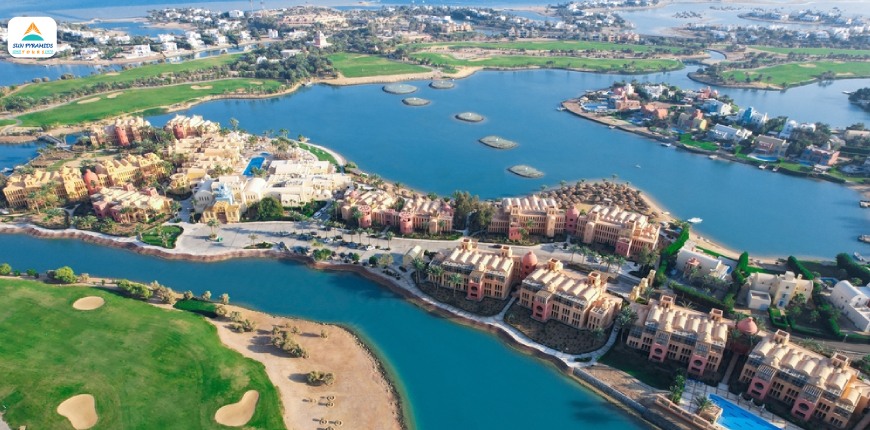
It's always sunny in this fully-integrated little town along the pristine shoreline of the Red Sea, just north of Hurghada. El Gouna has become the base for a multinational community of digital nomads, young families, and expats convinced that life is better by the water. El Gouna has great aquatic activities and lots of options for hiking and safaris in the surrounding desert landscapes, which are appealing to younger travelers. It also has bougie boutiques, cultural events, and top-tier culinary experiences thanks to its many upscale restaurants, that makes it one of the Best Tourist Attractions in Egypt There are plenty of world-class services, restaurants, living spaces, coworking spaces, solid wifi connections, and lots of ways to keep busy outside of work hours – why work from home when you can work from El Gouna? 
1) Expertise and Experience: Sun Pyramids Tours has a wealth of 53 years of experience in the travel and tourism industry. 2) Customized Itineraries: Sun Pyramids Tours offers tailored itineraries to suit your preferences. Whether you're interested in historical sites, cultural immersion, or adventure activities, we can design a tour that matches your interests. 3) Local Connections and Insider Access: Sun Pyramids Tours can provide you with unique opportunities and insider access to attractions and experiences that may not be easily accessible to independent travelers. 4) Hassle-Free Planning: Sun Pyramids Tours can take the stress out of planning your trip. We handle all the logistics, including accommodations, transportation, and guided tours, at competitive prices… Relax and enjoy your vacation without worrying about the details. 5) Customer Satisfaction: Sun Pyramids Tours prides itself on providing excellent customer service and ensuring customer satisfaction. They strive to meet and exceed your expectations, making your trip enjoyable and memorable. Add trip advisor reviews, Facebook page reviews, etc. 6) Safety and Security: Sun Pyramids Tours prioritizes the safety and security of their guests. We work with trusted partners, adhere to safety guidelines, and provide support throughout your journey to ensure a safe and comfortable travel experience.